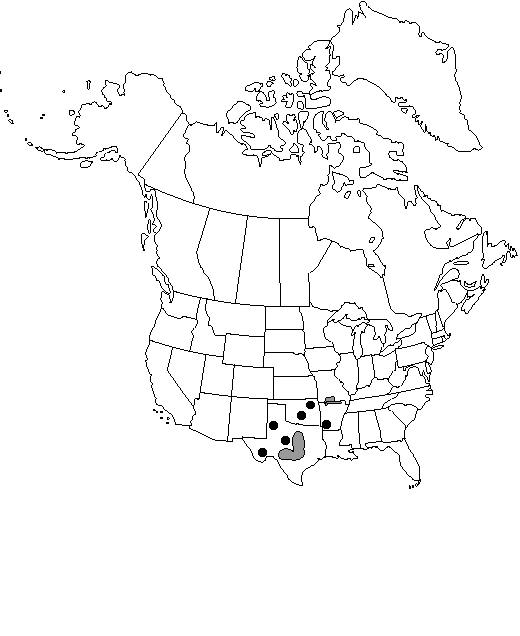Juniperus ashei
Bot. Gaz. 90: 329. 1930.
Trees dioecious, to 15 m, single-stemmed to 1–3 m, occasionally branching at base; crown rounded to irregular and open. Bark brown, exfoliating in thin strips, that of small branchlets (5–10 mm diam.) smooth, that of larger branchlets exfoliating in strips. Branches spreading to ascending; branchlets erect, 3–4-sided in cross-section, ca. 2/3 or less as wide as length of scalelike leaves. Leaves dark green, abaxial glands hemispheric, raised (particularly obvious on whip leaves), exudate absent, margins denticulate (at 20×); whip leaves 3–6 mm, not glaucous adaxially; scalelike leaves 1–2 mm, not overlapping or overlapping to 1/4 their length, keeled, apex acute to obtuse, spreading. Seed-cones maturing in 1 year, of 1 size, with straight peduncles, ovoid to nearly globose, 6–9 mm, dark blue, glaucous, fleshy and resinous, with 1 (–3) seeds. Seeds 4–6 mm. 2n = 22.
Habitat: Limestone glades and bluffs
Elevation: 150–600 m
Distribution

Ark., Mo., Okla., Tex., Mexico
Discussion
The name Juniperus mexicana Sprengel has been misapplied to this species. Reports of hybridization with J. virginiana and J. pinchotii have been refuted using numerous chemical and morphologic characters (R. P. Adams 1977).
Ashe juniper is a source of Texas-cedarwood oil and fence posts.
Selected References
None.
Lower Taxa
"/4" is not declared as a valid unit of measurement for this property."thick" is not a number.
